The first thing we do when the festive season is over is to go on a hike to start the battle against the festive flab. A fifteen minute drive away is the start of one of our favourite walking routes in Arrábida Natural Park. It takes in windmills, a lush valley of vines and olive groves, woods, and views of Lisbon as well as the Sado Estuary. We must have walked the route six or seven times, and nearly every one was slightly different from the others.
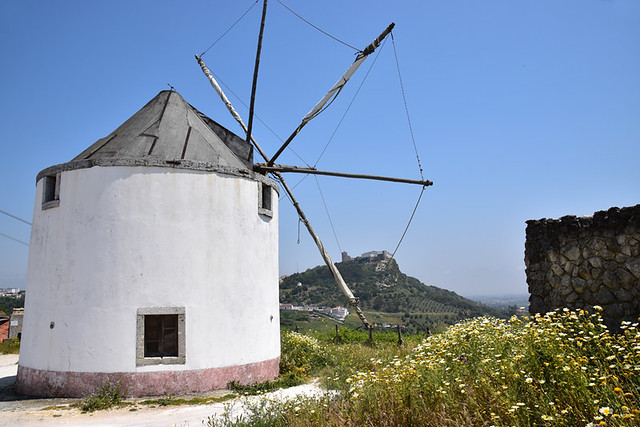
Arrábida Natural Park is a maze of tracks and paths. That’s the upside for walkers. The downside is not all of them are public ways. The trick is knowing which are and which aren’t. We didn’t realise this when we first started exploring Arrábida. We found out the hard way.
Where is Arrábida Natural Park?
Located on the Setúbal Peninsula on the southern side of the Tagus River, Arrábida’s hills break up the flatlands which generally sweep south and east from Portugal’s capital city. It’s a rural area a short drive from one of Europe’s most vibrant cities. Once immersed in its hills and valleys, there’s no sense at all that Lisbon is close by.
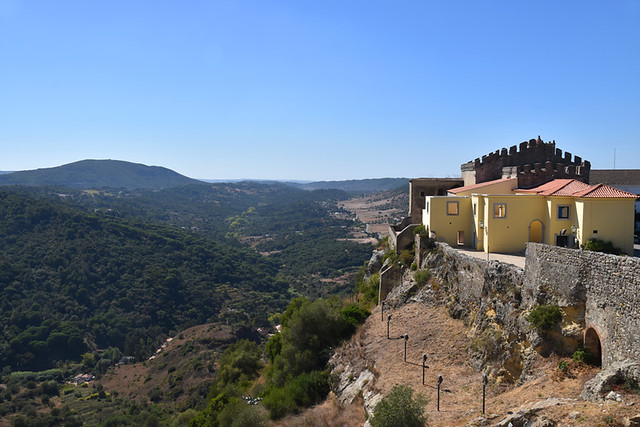
On the eastern end of the park is Setúbal, a working town with a historic centre, great restaurants and an appealing personality. On its western edge is Sesimbra, a fishing village and the closest thing to a resort in the area. On its northern boundaries are Palmela, whose hilltop castle is visible from Lisbon, and Nogueira de Azeitão, a picturesque town with a heritage in producing wine. The combination of historic centres, fishing communities, gastronomic goodies, and natural beauty make for a compelling mix. Oh, and Arrábida has some of the best beaches you’ll find anywhere.
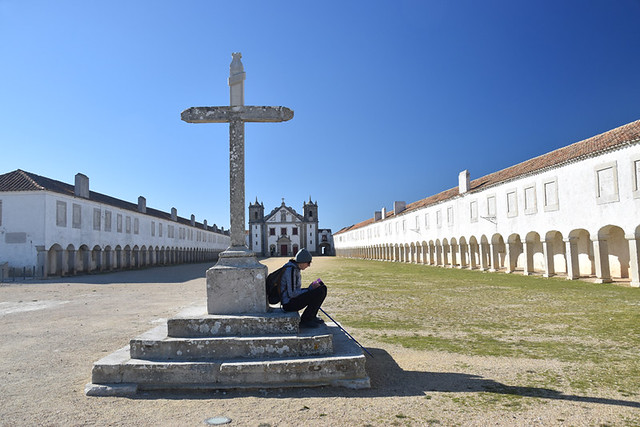
What’s it like?
For a relatively small area, the landscape in and around Arrabida is surprisingly diverse and full of surprises. We’ve visited the Far East and the Caribbean and the beaches in Arrábida are as jaw-dropping as any we’ve seen. Cabo Espichel is typical of a cape jutting out into the Atlantic. It has a raw beauty and is absolutely fascinating with its pilgrims’ sanctuary and dinosaur footprints embedded into cliffs. Travelling east the land becomes more verdant, with ridges and serras concealing valleys, plains and hills. Some parts are characterised by sculpted vineyards, olive groves and the occasional historic mansion or monastery. Others are wilder, carpeted in cork oak and stone pines. The Atlantic, stunningly blue, hems the park in along its southern border. Book-ending the undulating landscape are the proud castles at Sesimbra and Palmela. In spring Arrábida is awash with wild flowers.
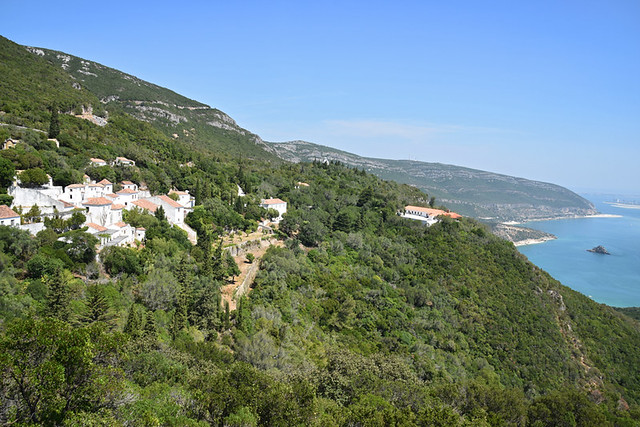
Walking in Arrábida Natural Park
Discovering Arrábida Natural Park was a walking destination was a bonus ball for us. We chose Setúbal as a base because of other factors – its personality, restaurants, and proximity to other interesting areas as well as Lisbon Airport. We didn’t expect good walking as well. To cut a long story short, finding out how good Arrábida Natural Park was for hiking led to us helping create an Inntravel walking holiday for the area which went ‘live’ in April 2019. From Cape to Castle covers three different locations and includes seven different walking routes in Arrábida and has been hugely successful.
We’ve helped put together Slow Travel walking holidays in Spain, Greece, France, Slovenia, Germany, Austria, and other parts of Portugal. Arrábida was, by some distance, the most challenging and difficult of them all so far.
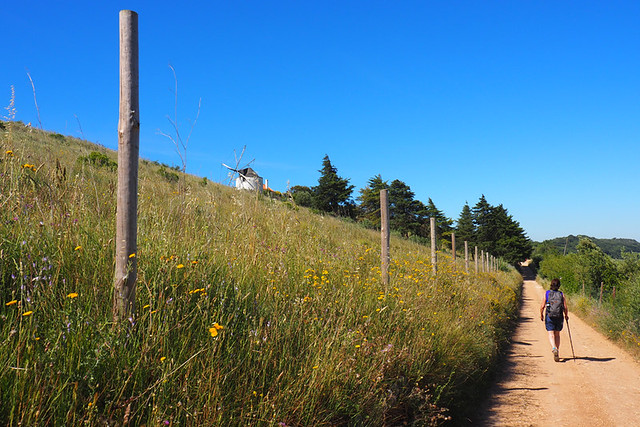
Factors to know about walking in Arrábida Natural Park
As I mentioned before, there are numerous trails criss-crossing the park. These range from narrow paths to dusty dirt tracks; access to remote cottages and cork trees. Some were once ancient walking trails… but no more. I said there were seven walking routes as part of the walking holiday, but we walked a hell of a lot more to come up with those seven. Despite having maps which showed where paths had once existed, we found our progress on numerous occasions halted by newly erected fences. Arrábida might be a Natural Park but much of it is private; some owners have fenced off walking trails. In some cases local hikers had taken wire-cutters to ‘obstacles’. At one point, after a dead end too far, we came close to giving up and considered advising Inntravel that a walking holiday just wouldn’t work in Arrábida. But as we walked and walked we learned how things ‘worked’; which paths were safe and which had the potential to be closed in the future.
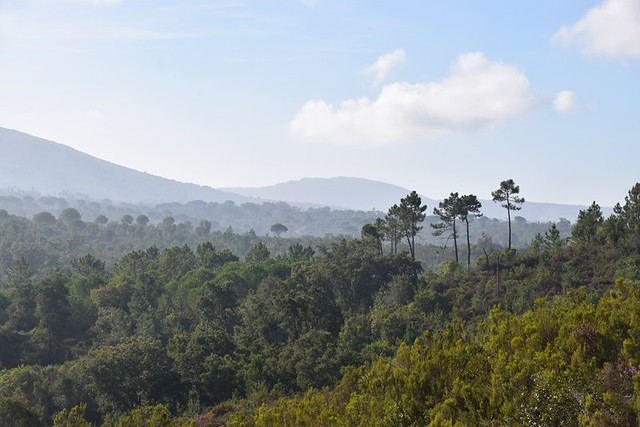
There were no marked trails as such, although boards in various locations showed there had once been walking routes in some parts. Mostly we had to thread walking routes together section by section, eventually creating hiking routes which connected one end of Arrábida with the other. We met few other walkers and no non-Portuguese ones (until the Inntravel holiday became available). A couple of areas were more popular with locals enjoying nature than others, especially at weekends. As is the case with many destinations we’ve hiked, they knew where they could and couldn’t walk. Visitors with no pre-planned routes to follow don’t have that knowledge. Now and again we were warned, in a friendly manner, about the perils of walking in Arrábida. “Visitors get lost here.” was a phrase we heard a few times.
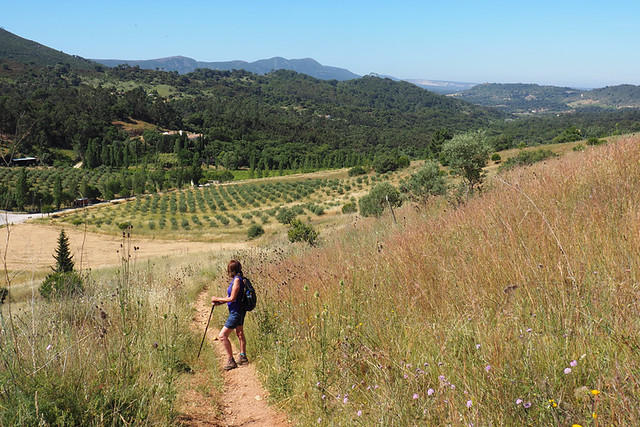
Until now the best way for visitors, who didn’t come armed with route directions, to safely see the best of Arrábida was to walk with a local guide. However, last year (2019) we started seeing painted walking waymarks appear. Setúbal, Palmela, and Sesimbra are now creating a series of hiking routes in Arrábida. These were due to be completed by the end of 2019, but they are still in the process of finalising routes. Once fully functional they should make it easier for visiting hikers to enjoy more of this beautiful part of Portugal without the fear of getting lost or – another concern we were occasionally warned about – “falling down a hole.”



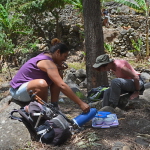
Be the first to comment